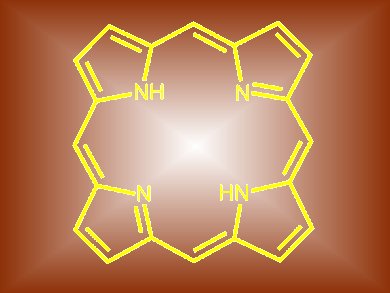Carbon monoxide is highly toxic as it blocks the binding site for oxygen in hemoglobin. Using scanning tunneling microscopy, Johannes Barth, Technische Universität München (TUM), Germany, and co-workers have elucidated the way in which gas molecules bind to iron and cobalt porphyrins.
A single CO molecule was expected to bind axially to the central metallic atom. However, two CO molecules were seen to be weakly bound between the central metal and the two opposite nitrogen atoms. Modeling with density functional theory revealed that the porphyrin molecules assumed a pronounced saddle-shape conformation when CO was present.
Stronger-binding nitrogen monoxide was seen to bind directly to the central metal, as expected. Only a single NO molecule fitted into each porphyrin ring, leading to flattening of the saddle-like confirmation.
As the confirmation changes with different gases, this result could be relevant for potential applications, such as CO sensors.
- Cis-dicarbonyl binding at cobalt and iron porphyrins with saddle-shape conformation
K. Seufert, M.-L. Bocquet, W. Auwärter, A. Weber-Bargioni, J. Reichert, N. Lorente, J. V. Barth,
Nat. Chem. 2011.
DOI: 10.1038/NCHEM.956

